If you’ve seen a horse wearing blinders – or blinkers, as they’re also known – you may be wondering what’s behind it. What’s their purpose? And why do some horses wear them and others don’t?
We’re going to take a look at what blinders are, and what they do. We’ll investigate five reasons why horses wear blinders. And we’ll clear up some common causes of confusion with other equipment.
So if you’re ready, step this way to find out more!
What are blinders?
Blinders are also referred to as blinkers or winkers, and they’re usually made of leather or plastic. They fit on to the horse’s bridle or halter, or onto a hood. There are many different types, but they usually sit to the side and rear of the animal’s eyes.
In English, this piece of equipment even gives its name to a figure of speech. People are said to be “blinkered” if they’re unable to see a broader perspective.
That gives you a clue as to the purpose of blinders. They restrict the horse’s vision, so that they can only see ahead of them. But why would that be useful?
Horses’ vision influences their behavior
In many places in the wild, horses are a prey animal, needing to watch out for predators. Their vision is therefore an extremely important part of their defence system. And it’s very good.
Instead of being positioned at the fronts of their heads, as with humans, horses’ eyes are on the sides. That gives them a very wide field of vision – about 350 degrees. The only areas they cannot see are directly in front of, and directly behind, their heads.
Horses also have the amazing ability to switch between monocular and binocular vision.
In other words, they can view both sides of their vision separately, through each eye – that’s monocular vision. Or they can turn towards an object and view it through both eyes together, with binocular vision. Binocular vision gives better depth perception.
All this means that horses can receive large amounts of visual data about their environments. And while that might be helpful for avoiding predators, it can cause them to get distracted or anxious.
That’s where blinders come in. Their purpose is to reduce the horse’s field of vision and make them focus on what’s in front of them. That can help the horse relax and focus on what it’s doing.
There are several circumstances in which this is particularly important. Let’s look at some of them now.
Reasons why do horses wear blinders
1. When pulling a carriage
As we’ve seen, horses want to know what’s happening around them. If all that visual information causes them to become distracted, that can be dangerous.
Horses often pull carriages in areas frequented by tourists, where they’re a popular attraction. But that can also mean they work in places full of sights and sounds, surrounded by both people and traffic. Horse-drawn carriages are a well known sight in cities like New York and New Orleans, for example.
A horse that’s pulling a carriage needs to stay focused on its job. If it’s startled by something happening around it, it could all too easily bolt. That would be very dangerous for both the horse and any passengers.
Horses also often work in pairs to pull carriages – and they’re inquisitive animals! Their partner can easily become a source of distraction. And if they take against their neighbor in the harness, as sometimes happens, the situation can quickly become difficult.
Another potential issue with the carriage comes back to the horse’s instincts as a prey animal. Some have theorised that the vehicle could be seen as a predator. After all, it remains directly behind the horse, and moves along with it. That’s very similar to the way many predators track prey.
The very fact of having a carriage behind them could, therefore, spook some horses.
All of those problems can be avoided with the use of blinders. They keep the horse focused on what’s happening in front of him, eliminating dangerous distractions. And that also helps the horse to move straight ahead, avoiding bumping into any other horse paired alongside him.
2. For draft work
A similar set of considerations apply to horses undertaking draft work – in other words, plowing or other farm labor.
Horses will often be paired together at a plow. So taking an interest in their neighbor can be more than enough to distract horses from the task at hand!
And a plow or cart positioned behind the animal can present the same possibility of being mistaken for a predator.
A horse pulling a plow may be surrounded by fewer stimuli than one drawing a carriage in the city. But there’s still the possibility of distractions, whether from other animals, machinery, or even shadows. With heavy farm equipment included in the equation, keeping the horse focused is vital for safety.
Blinders are a simple way of doing just that. By narrowing the horse’s field of vision, the possibility of it being startled by sudden movements is drastically reduced.
Most blinders used with draft animals are made of leather, and they’re usually attached to the halter.
3. When racing
A horse racing track is packed full of visual and aural stimuli for horses. There’s the crowd, the jockey, the commentator. And there are loads of other horses running alongside them.
It’s also a place that’s full of risk. The horses will be galloping at great speeds. They may be jumping over fences. If they make a mistake, the consequences for them, their riders, other horses and bystanders can be severe – even fatal. At the very least, looking around them can cost them time in the race.
It’s therefore essential to keep the horse as calm and focused as possible in the midst of all the mayhem.
In the USA, blinders are frequently used to help with this task. They usually take the form of plastic cups attached to a fabric hood worn by the horse. Depending on the design, they can reduce the animal’s field of vision by anything between 30 and 180 degrees.
The decision on whether to use blinders will be made the trainer and jockey, who will best understand the individual horse. While for some horses, they can be very effective, that’s not always the case.
Studies have shown that the most restrictive blinders can make some horses to feel claustrophobic. That may cause them to speed up at the beginning of a race, as they try to escape the situation. But they will quickly tire, losing ground the further they run.
Blinders used in racing come in many different designs, with different purposes.
Full cup or extension cup blinders are the most restrictive. They’re used for horses that have a tendency to drift to the outside of the track. The blinder is put on the eye on the side they veer towards, helping to keep them running straight.
The most common design are standard blinkers. These have a cup that covers two thirds of the horse’s eye, with a small hole in the middle. The hole allows the horse to see other animals getting closer.
A semi-cup is less restrictive again. And a French cup isn’t a cup at all, but a piece of plastic that extends from the hood. It prevents the horse seeing its rider.
Least restrictive of all are what’s known as “cheater cups”. These barely affect vision, but are instead used to signal to the horse that it’s time to race.
Blinders are less often used in European racing, although cheekpieces are becoming more common. These are strips of sheepskin that sit on the horse’s cheeks. There are strict rules about how large they can be. They can limit the horse’s peripheral vision, but to a smaller degree than blinders.
4. To help injured eyes recover
In some cases, blinders can be used to help a horse with damaged eyesight to recover. Some conditions can be exacerbated by light, so using more restrictive forms of blinders can protect their eyes.
A horse with injured eyes can do them more harm by something as simple as rubbing against a tree. A mask with firm cups can be very helpful here, protecting the eyes from further injury from scratching or abrasions.
When is a blinder not a blinder?
We’ve seen that horses can wear blinders in many circumstances. It’s most usually when they’re doing an activity that requires concentration – whether that’s draft work, drawing a carriage or racing.
But you may also see horses wearing masks when they’re simply standing in a field. So what’s going on there?
Unless the horse has injured eyes, the chances are what you’re seeing isn’t blinders at all. The more likely explanation is that the horse is wearing a fly mask.
Just as you’d imagine from the name, these are designed to stop the horse being bothered by insects.
That’s not simply a matter of removing a form of annoyance. Some insects can present serious risks to a horse’s health. And bloodsucking insects like mosquitoes can cause a lot of distress.
Nature’s way of protecting horses from this is with an abundant mane and forelock. But not all breeds of horse have these. And some horses are particularly sensitive to bites, and require extra protection.
Although a mask may appear to prevent the horse from seeing, that’s not the case. It’s actually made from mesh, allowing the horse to see through it.
They’re designed to be worn when the horse is at pasture, but there are also riding versions available. These fit more closely over the horse’s face and provide better visibility. But they’re not as sturdy as other fly masks, and shouldn’t be worn all the time.
Correctly fitting a fly mask
It’s very important to choose the right fly mask and to fit it correctly. If that isn’t done, it can do more harm than good. So if you’re thinking about buying one for your horse, here are a few hints and tips to get it right.
To begin with, take a careful look at what it’s made from. It needs to be a fabric that’s perfectly smooth, with no rough edges. And any part that will touch your horse’s face should have a soft lining.
Next, focus on the fit. You want the mask to lie smooth against your horse’s face. The lower edge should sit at least an inch below the base of his cheekbone. If it finishes too high, there’ll be a gap that could let in flying insects.
But note that you should still be able to slip a finger between your horse’s face and the mask. If it’s too tight, it will rub and cause sores.
Check carefully how the mask sits over your horse’s eyes. It’s very important that it doesn’t touch any part – not even an eyelash. If it does, it can be a source of infection – a corneal ulcer, to be exact. Check from every angle, and with your horse’s head both raised and lowered.
Last but not least, be ready to try different styles of mask, depending on how your horse reacts to it.
In general, the more of his face it covers, the more effective it will be at keeping away insects. But some horses dislike the sensation of a full mask and will make every effort to get rid of it. In that case, you may get better results with a lighter design.
And if you’re in an area where midges and gnats are a problem, a mask with ear protection might be advisable. Again, it will depend on how the horse reacts. Some unfortunately take exception to ear coverings and will make short work of a mask that includes them.
That’s all about blinders!
We hope you’ve enjoyed our review of the reasons why horses wear blinders. They can be valuable aids in relaxing and focusing your horse when he’s working. And that can make life safer both for you and for him.
But they won’t be appropriate for every animal. So try out different approaches and assess the way your horse reacts. The same applies if you’re considering using a fly mask.
Remember, your horse is as individual as you are. Good luck, and happy riding!
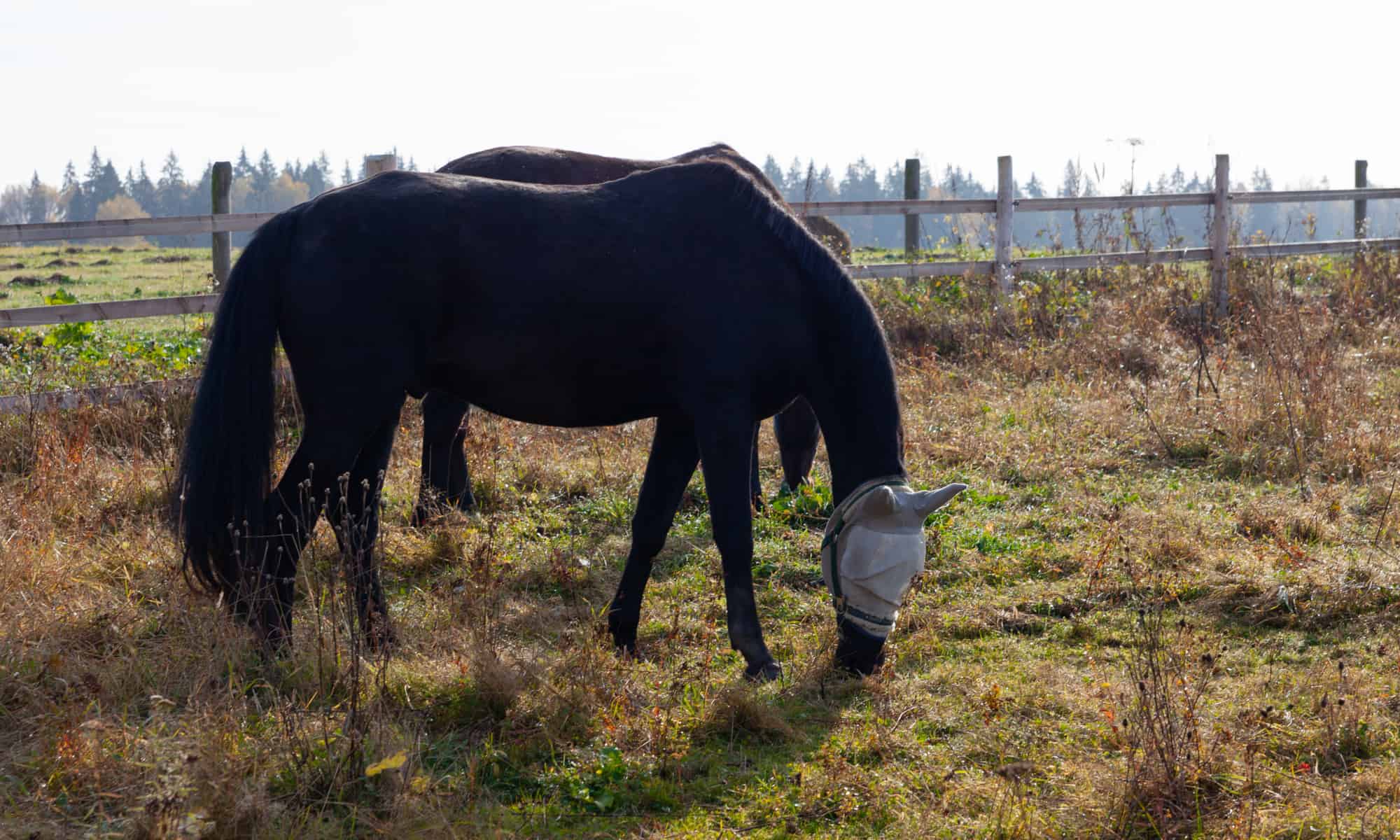
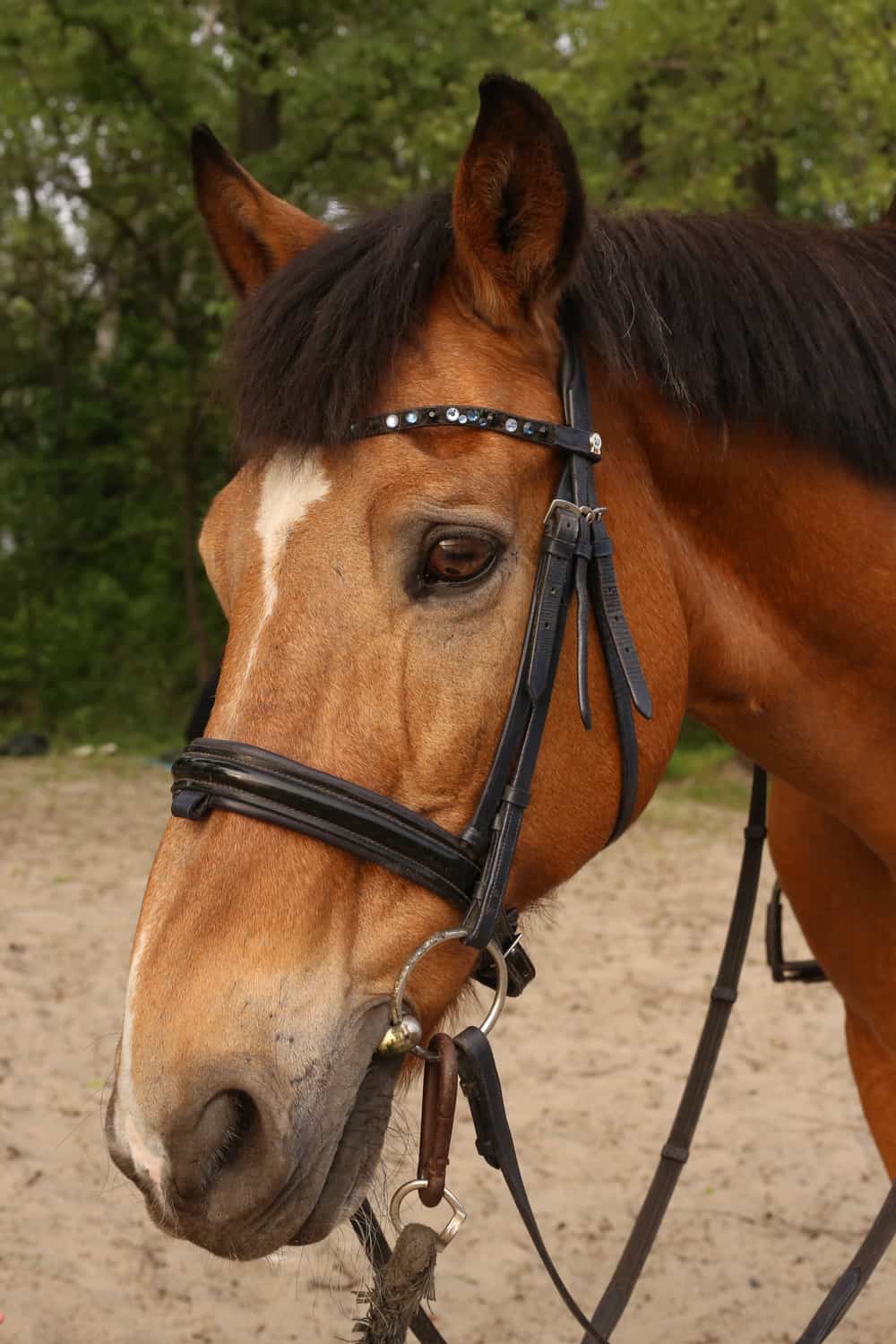
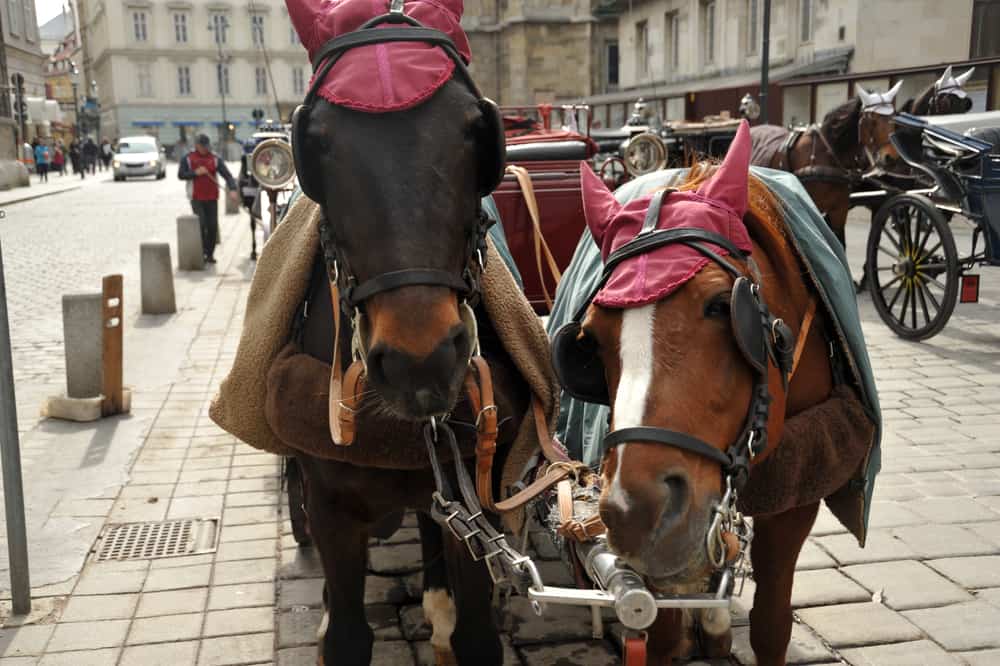
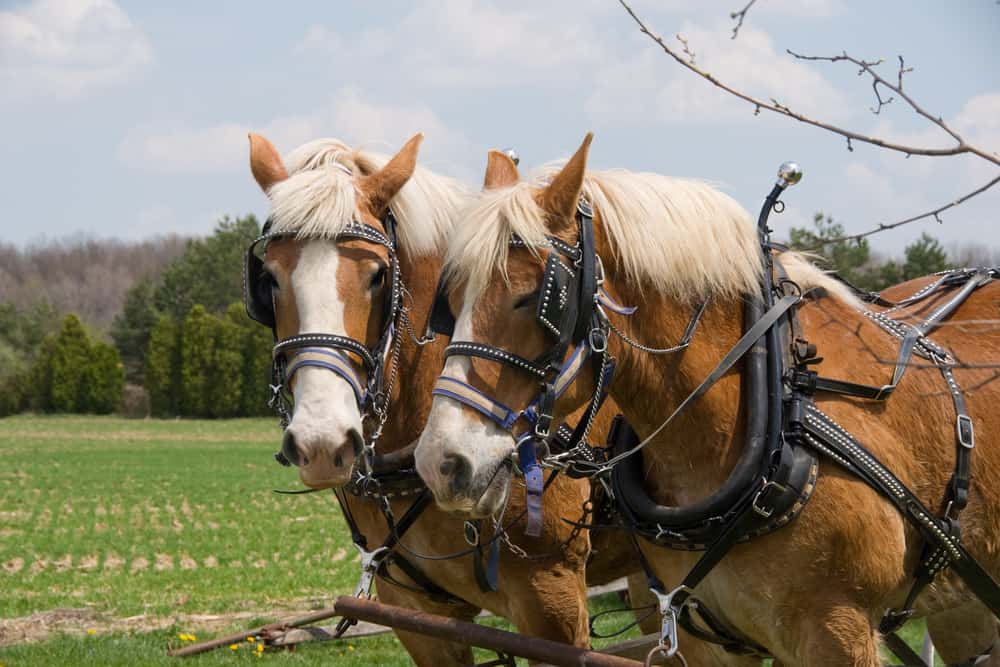
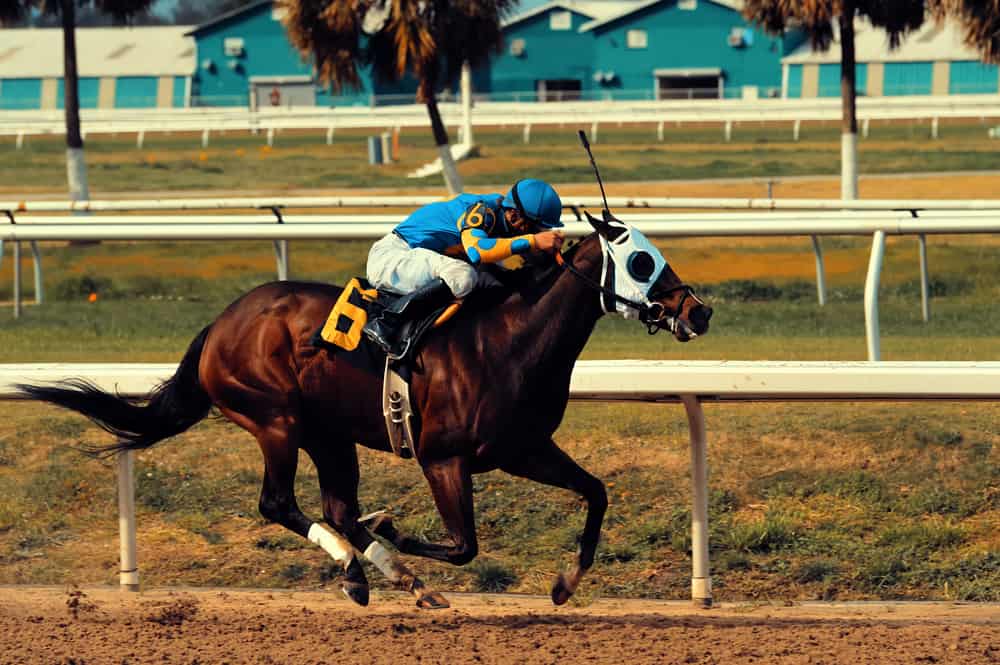
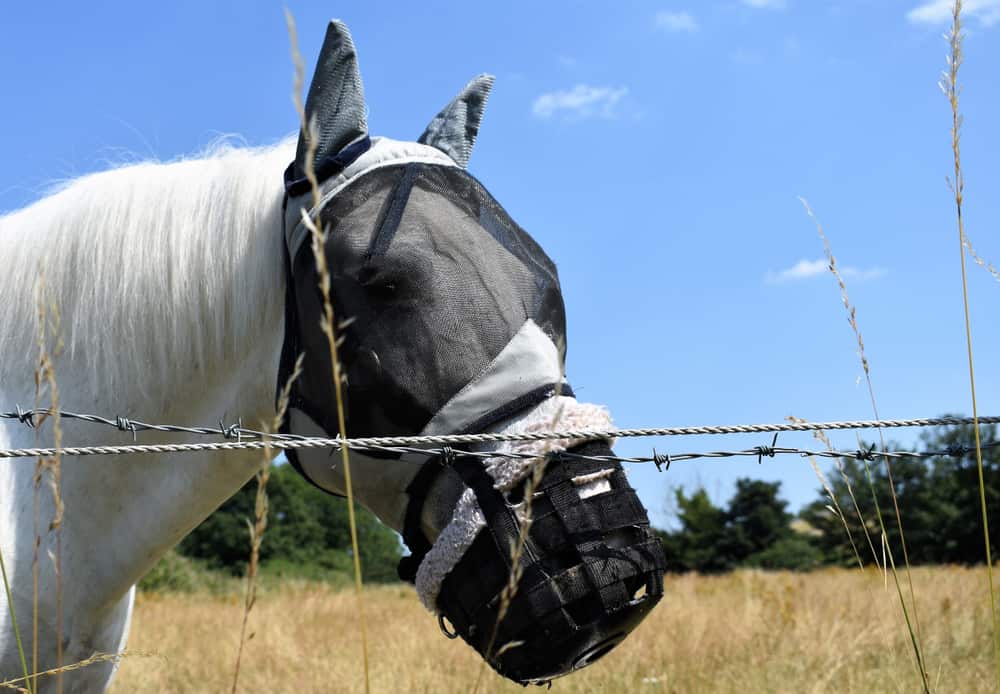








What type of blankets are best? When and why are they used?… I have seen farms where all the horses are fully covered and some masked. It felt like this was a farm that knew and cared deeply about the well being and always left me with a sense of gratitude.
Thank you Kindly;
S.L.Belling
Considering a Clydesdale